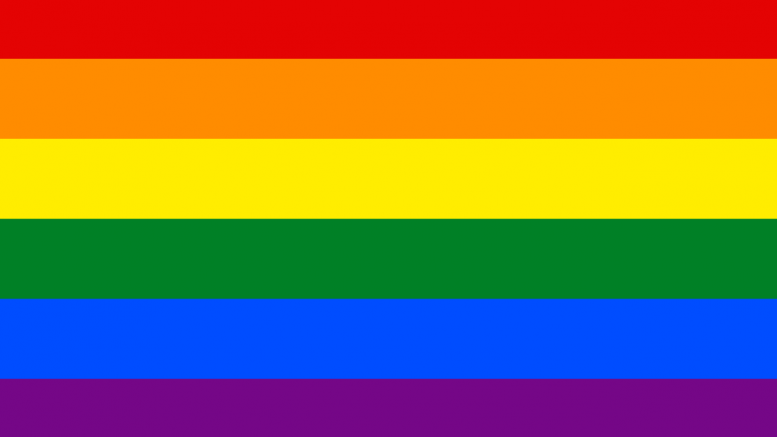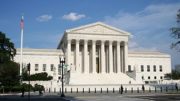Peter Sprigg | FRC
June is back, and with it “LGBT Pride Month.” Those who identify as lesbian, gay, bisexual, and transgender celebrate in June because it marks the anniversary (this year, the 50th) of the “Stonewall Riots,” which are generally cited as the beginning of the modern “gay liberation movement” in the United States. It was in the early morning hours of June 28, 1969 that patrons of a gay bar called the Stonewall Inn, in New York City’s Greenwich Village, rebelled against what they saw as persistent police harassment by rioting during a police raid on the facility.
What, exactly, is “LGBT Pride” about? Some offer a limited, and relatively benign, description. The Library of Congress, for example, says, “The purpose of the commemorative month is to recognize the impact that lesbian, gay, bisexual and transgender individuals have had on history locally, nationally, and internationally.” President Trump recently became the first Republican President ever to recognize (on Twitter) LGBT Pride Month, but did so in similarly limited terms, saying that “we celebrate LGBT Pride Month and recognize the outstanding contributions LGBT people have made to our great Nation . . .”
But the LGBT movement is talking about much more than “contributions” to our nation when it promotes “LGBT Pride.”
Defining “LGBT”
First of all—who exactly are “lesbian, gay, bisexual and transgender individuals?” The answer is not as obvious as it seems. Both “sexual orientation” (“LGB”) and “gender identity” (“T”) are terms that describe a mix of feelings, behaviors, and self-identification. “Lesbians” and “gays” may refer to people who experience sexual attractions toward persons of the same sex (feelings); and/or engage in sexual acts or sexual relationships with persons of the same sex (behaviors); and/or self-identify as such. (Similarly, “bisexuals” are attracted to, and/or have sex with, people of both sexes, and/or identify as bisexual). “Transgender” persons, on the other hand, experience a disconnect between their biological sex at birth and their psychological “gender identity” (feelings); and/or present themselves publicly (in their dress, etc.) as the opposite of or different from their biological sex (behaviors); and/or self-identify as transgender, or as something other than their biological sex.
Exactly which of these things are LGBT people expressing “pride” in—their feelings, behaviors, or self-identification? Or is it all three?
Some may argue that it is not about pride in their sexuality, as such, but instead pride in their “impact” or “contributions.” Such a sharp separation, though, would implicitly suggest that they are proud of what they have accomplished in spite of being “LGBT”—not because of it. It’s highly unlikely that most LGBT advocacy groups would embrace such a defensive—almost apologetic—framing of “LGBT Pride.” They are not simply proud of their accomplishments in the arts, business, sports, etc.—they are expressing “pride” in being LGBT.
But again, which aspect? Are they proud of their feelings of same-sex attraction or “gender incongruity?” To accept “LGBT Pride” is to accept the assertion that these feelings are a normal and natural variant of human sexuality. That is an ideological assertion, not a scientific one, and the high rates of mental illness that accompany such feelings is strong evidence against the idea that homosexual and transgender feelings are “natural.” (Evidence does not support the widely-argued theory that such problems are caused by societal discrimination, because they are widespread even in the most LGBT-friendly of countries, such as in the Netherlands or in Scandinavia.)
Are they proud of their behaviors—of being men who have sex with men, women who have sex with women, men who dress up like and pretend to be women, or women who dress up like and pretend to be men? Men who have sex with men, in particular, have high rates of HIV infection and other sexually transmitted diseases as a direct result of that sexual behavior—so is it something to be “proud” of? Some individuals who identify as transgender ask surgeons to mutilate or remove otherwise healthy body parts—often with serious long-term consequences—in order to make their bodies resemble more closely their desired sex. Is this something to be proud of?
The tendency of many straight “allies” of “LGBT Pride” is to avert their eyes from these actual behaviors. Instead, they define such individuals by their feelings, and then accept the argument that because these feelings are not a “choice,” they must define the person’s innate identity. This is a mistake. Just because feelings are not chosen does not mean they are inborn—they may result from developmental forces in childhood and adolescence. And while feelings are not chosen, both behaviors and a self-identification are chosen.
It is a virtual certainty that LGBT advocacy groups—the people who conceived of the idea of “LGBT Pride” in the first place—would be unwilling to separate their feelings, behaviors, and self-identification as sources of pride. To endorse “LGBT Pride” is to endorse all three—to affirm that LGBT feelings are normal and natural (which is untrue), that LGBT behaviors are harmless or even admirable (also untrue), and that their LGBT “identity” is innate (untrue as well).
Political and Legal Agenda
Implicit in LGBT Pride is thus a mistaken view of “sexual orientation” and “gender identity” themselves. It also, however, involves a radical political and legal agenda.
The 2015 Supreme Court decision ordering every state to offer civil marriage licenses to same-sex couples (thus overturning the constitutions of thirty states) hardly marked the end—or even a pause—in the demands of the homosexual movement. Instead, those demands merely became more aggressive.
Having eliminated virtually all distinctions under the law between opposite-sex and same-sex relationships, gay activists began fighting more vigorously against private individuals or entities that might dissent from the new liberal orthodoxy, even on grounds of conscience or religious conviction. Some of those attacks have been rebuffed, albeit at great cost—such as that upon Jack Phillips, a Christian baker in Colorado who gladly served openly gay-identified customers, but declined to participate in the celebration of a same-sex wedding by designing a custom wedding cake. Although Phillips won his case in the Supreme Court in 2018, the decision was on narrow grounds.
Despite the fact that a majority of states have rejected the idea of treating sexual orientation and gender identity as the equivalent of race under their civil rights laws, LGBT activists are pushing a federal bill, dubbed the “Equality Act,” that would enshrine these as specially protected categories under virtually every federal civil rights law. The Equality Act was already passed by the U.S. House of Representatives in late May, and LGBT Pride Month will undoubtedly be marked by efforts to give it momentum in the Senate.
As if persecuting small businesses weren’t enough, homosexual activists and their allies in the states have even been invading the privacy of the relationship between mental health providers and their clients, by passing laws to prohibit sexual orientation change efforts, or SOCE (which critics refer to as “conversion therapy”) with minors. Ironically, this takes away the freedom of people with same-sex attractions—if they experience those attractions as unwanted. People who are “proud” of being LGBT have nothing to fear from such therapy, because it isn’t for them. Yet such prohibitions (which are likely unconstitutional) are part of the “LGBT Pride” political agenda.
Since the judicial battle over same-sex marriage ended in 2015, we have seen an explosion of attention to the transgender movement. Although both the homosexual and transgender movements involve an attack upon the natural understanding of sexuality, the transgender issue is even more radical. While some have argued that homosexuality merely involves people’s conduct in private, the same cannot be said about the transgender agenda, which explicitly demands that people give public affirmation to the way people who identify as transgender present themselves in public.
Transgender activists are upset with the Trump administration for reinstating longstanding restrictions on military service by those with gender dysphoria, even though mental and physical health concerns clearly justify such a policy. They also object to the administration’s common-sense conclusion that laws protecting against discrimination on the basis of “sex” should be interpreted to protect on the basis of biological sex, not “gender identity.”
The threat to the safety, privacy, and hard-won accomplishments of women and girls is particularly prominent, since transgender activists demand the right for biological males to appear nude before females in locker rooms and showers, and to compete with females in athletic competition despite having inherent physiological advantages.
These concerns have led even some radical feminists to join in opposing the transgender movement. Is invading women’s privacy and destroying a level playing field for women’s sports something to be “proud” of?
A Christian Perspective
The critiques of “LGBT Pride” offered above should be persuasive to thoughtful, honest people of any religion or no religion. But are there specific reasons why believing Christians should be concerned about “LGBT Pride Month?”
Thomas Tobin, the Roman Catholic Bishop of Providence, Rhode Island, thinks so. On June 1, he issued the following caution on Twitter:
A reminder that Catholics should not support or attend LGBTQ “Pride Month” events held in June. They promote a culture and encourage activities that are contrary to Catholic faith and morals. They are especially harmful for children.
The comment sparked online outrage, triggering angry responses from a member of Congress and Hollywood actresses, among others. They seemed particularly incensed by the remark about harm to children. It is unclear whether Bishop Tobin was referring generally to the ideological indoctrination children might receive at such events, are whether he was concerned about the appropriateness of what is often found in LGBT Pride parades—such as scantily-clad men, simulated sex acts, and drag queens. The former tennis star and self-identified lesbian Martina Navratilova said, “Catholic clergy has been a lot more dangerous to kids than LGBT” (apparently without irony, since there is reason to believe that most of the Catholic priests who have molested children are themselves homosexual).
In an older commentary (2009), Southern Baptist theologian Albert Mohler expressed a similar view:
There is no way that biblical Christians committed can join in the chorus of gay pride. The Bible is straightforward in its consistent identification of homosexual acts as inherently sinful.
Some people may see supporting LGBT Pride as an act of Christian love. Tim Barnett, of the apologetics ministry Stand to Reason, has explained the fallacy in this argument:
They conflate acceptance and affirmation with love. Therefore, the people who do not affirm LGBT values are, by definition, unloving. But this is clearly mistaken.
It is possible to truly love someone, but not accept and affirm their ideas or behavior. We do this all the time. We all have friends and family members that we love dearly even though we disagree with—and even oppose—their behavior or ideas.
Barnett cites Romans 12:9-10:
“Let love be genuine. Abhor what is evil; hold fast to what is good. Love one another with brotherly affection. Outdo one another in showing honor.”
In the middle of commending “love” and “honor” to the Romans, the apostle Paul says that we must “abhor” evil—the two are not contradictory. Likewise, in the famous love chapter, 1 Corinthians 13, Paul says, “Love . . . does not rejoice at wrongdoing, but rejoices with the truth” (1 Cor. 13:4-6, ESV).
While LGBT conduct is one problem with “LGBT Pride,” the concept of “pride” itself is another. Writer Avery Foley has pointed out how Scripture often describes pride as a sin, declaring that “God opposes the proud” (James 4:6, ESV). And Christian Concern, a British organization, cites 1 John 2:16, which juxtaposes “the desires of the flesh” with “pride”:
“For all that is in the world—the desires of the flesh and the desires of the eyes and pride of life—is not from the Father but is from the world.” (ESV)
“Insidious”
The most interesting piece I came across in researching this piece online was an interview that a British podcaster had with Craig Schoonmaker, who claims that he coined the term “gay pride” in New York in 1970, during planning for an event to mark the first anniversary of the Stonewall riots. Schoonmaker said that someone else had proposed the term “gay power,” but he proposed “gay pride” instead:
I proposed “gay pride,” because there’s very little chance in most of the world for people to have power. Gay people did not have power then; and we only now have some. But anybody can have pride in themselves . . .
Interviewer Helen Zaltzman actually asked about the moral implications of promoting “pride”:
HZ: But the word pride carries negative connotations too, of conceit or vanity – pride is one of the seven deadly sins.
CS: Oh, no, this is not that kind of pridefulness; it’s more like self-esteem. That was sort of hackneyed even then. The poison was shame, and the antidote to that is pride.
Later, Schoonmaker made what I consider a Freudian slip:
HZ: Do you still think the word ‘pride’ is necessary?
CS: Oh, definitely. Absolutely. See, because it works—I don’t want to say insidiously—it works internally, and it makes people more self-assertive.
The word “insidiously” was absent from the transcript of the interview provided online; I transcribed it myself from the original recording. According to the dictionary, “insidious” means “awaiting a chance to entrap; treacherous,” or “harmful but enticing; seductive.”
Given the radical agenda that is attached to such a positive-sounding word, “insidiously” may be the best word for how “LGBT Pride” affects the values of American society.





